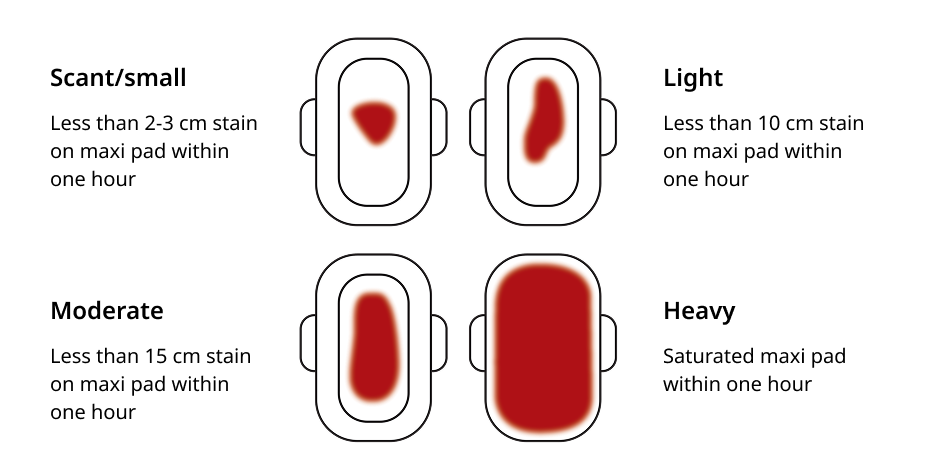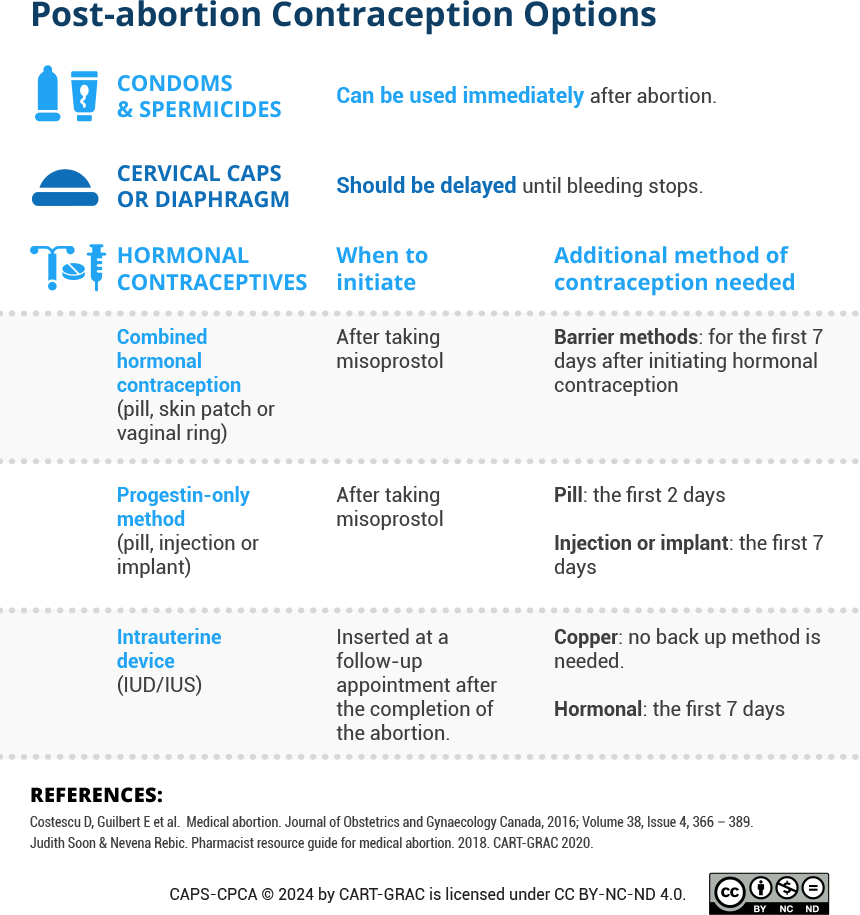How to Get Abortion Pills in Alberta
Abortion is legal, safe, and available in Alberta. If you’re considering a self-managed or medical abortion using the abortion pill, this post walks you through the entire process from making your first phone call to taking the pills and managing your recovery. We’ve also included real-life tips to help navigate any barriers you might face, whether it’s privacy, rural access, cost, or emotional overwhelm.
Want to explore your options more? This blog post walks you through the types of abortion available in Alberta.
All steps cited are applicable to minors. You have the right to confidentiality and privacy. Parental consent is NOT required for reproductive healthcare including abortion.
Step 1: Confirm the pregnancy
The first step is to confirm you're pregnant. You can:
Take a home pregnancy test. This measures hCG (human chorionic gonadotropin) produced by the placenta and found in the urine.
Where to get them: You can buy pregnancy tests in pharmacies and even dollar stores. Dollar store tests are as effective as more expensive home tests. Student associations and some clinics have free tests you can take home.
How to use them: hCG is most concentrated in the morning, so its a good idea to test your first morning pee. You want a mid-stream reading so pee a little into the toilet, then pee on the pregnancy test, and finally finish into the toilet. Results should be visible in 1 minute.
Get a blood test or an ultrasound.
Where to go: Your doctors office, a walk in clinic, a sexual health clinic.
How to get it: Call your clinic or choice and say you want to confirm a pregnancy. You don’t have to disclose if you plan to abort or not. You will be told your results and an estimate of gestation (how old the pregnancy is). If you feel comfortable in the clinic, you can talk about options.
What is Gestation?
Gestation refers to how old the pregnancy is. This is typically measured in weeks, and starts on the first day of your last period.
A self-managed or medical abortion is most effective between 6 to 10 weeks, though up to 12 is possible on a case-by-case basis.
After 10 weeks, an in-clinic abortion is recommended.
Top: invalid test, take again.
Middle: Negative, not pregnant
Bottom: Positive, pregnant
Step 2: Make the appointment
Once you’ve confirmed your pregnancy and have a rough idea of gestation (doesn’t need to be 100%) you can book an appointment to get abortion pills prescribed. This can be with your family doctor, or at another clinic.
What to say:
“I just found out I’m pregnant and I’d like to book an appointment to confirm pregnancy and talk about medication abortion. Do you have a clinician who prescribes the abortion pill?”
“I need confidential care and would like to speak with someone about medication abortion. Do your doctors provide mifegymsio?”
If you are told no:
Remind staff that they are legally required to give you a referral if they cannot meet your healthcare needs. “Call another clinic” is NOT a satisfactory referral. This applies to pharmacies as well.
Clinic staff should be professional and polite in accepting your call. You have every right to ask to speak to someone else, or hang up.
When to Call Pro-Choice YQL
Pro-Choice YQL is an incredible resource at any point in your abortion process. Our access line can help you find compassionate and inclusive clinics and pharmacies close to you to get the care you need.
When you might want to call us:
If you’re unsure where to go for pregnancy confirmation
We can direct you to local clinics, walk-ins, or labs that won’t ask unnecessary questions, and where you’re more likely to get timely care.If you’re facing delays or barriers
Sometimes a clinic won’t refer you, you can’t get a prescription, or you’re being told you’ll have to wait weeks. We can help you find faster options and advocate on your behalf.If a pharmacist refuses to fill your prescription
Some pharmacists may refuse to dispense Mifegymiso due to stigma or personal beliefs. We know which pharmacies are likely to stock it and how to handle refusals.If you’re worried about cost
In Alberta, medical abortion is covered with an Alberta Health Care card — but if you’re new to the province, don’t have coverage yet, or are unsure about billing, we can help you navigate the system.If you need travel assistance
Alberta is huge with many rural residents. Travel for healthcare is a reality for many patients, and the cost of fuel and accommodations shouldn’t prevent you from getting care. Pro-Choice YQL can connect you with volunteer drivers, cover fuel and accommodations costs.
If you just need someone to talk to
Abortion can be straightforward medically, but emotionally complicated. You might want a nonjudgmental ear, information about what to expect, or reassurance that you’re making the right choice for you.
What to expect when calling:
We’ll ask a few basic questions about where you are in the process (e.g., “Have you had a pregnancy test?” “When was the first day or your last period?” “Do you have an Alberta Healthcare Card or a family doctor?”)
We won’t pressure you toward or away from abortion — our role is to give you accurate info and connect you with the right resources.
If you need urgent help (like you’re running out of time for a medical abortion or need financial assistance), we’ll prioritize getting you the fastest care possible.
Call or Text Pro-Choice YQL 587-257-6833
Step 3: The clinic visit
What they’ll ask about and why:
Medical history (they’ll ask periods, last menstrual period (LMP), birth control, allergies, medical conditions, medications). This helps them date the gestation and flag anything that might interact with the medication. If you currently have an IUD in place, it must be removed before medication abortion.
The clinician will explain self-managed medication or in-clinic abortion and answer questions about both.
Ultrasound (if needed) or estimate by LMP. You can refuse the ultrasound as long as you have a good idea of your last menstrual period and the clinician doesn’t suspect an ectopic pregnancy. (This means the embryo implanted outside the uterus, which makes self-managed medication abortion more risky.)
Symptoms suggesting ectopic (one-sided pain, severe dizziness, shoulder pain, fainting). It is important to be honest and answer truthfully so your provider can recommend the best options for you.
Birth control options you’re using or have used in the past. If your birth control failed, they may suggest another method that might work better for you. You can get a prescription for birth control in this appointment and start taking it after your abortion. Read about your birth control options.
Informed Consent
Ask questions until you understand everything.
You are not a burden or annoying. It is literally their job.
Ask for a translator. Ask for them to speak slowly or use other words.
It is your responsibility to advocate for yourself and get the healthcare you deserve.
You have the right to informed consent. If you don’t understand something, ask your provider to explain it again.
Step 4: Getting the medication from a pharmacy
After your clinic visit, you will take your prescription to a pharmacy of your choice. If you have a prescription for birth control as well, you can get it filled at the same time.
You will give the pharmacist your Alberta Healthcare card, and they will give you the prescribed medicine free of charge. They will also go over the directions and answer any questions you have.
If the pharmacy says “no”
Pharmacists may conscientiously object to dispensing, but professional standards require them to help you secure the medication elsewhere promptly. If refused:
Ask to speak with the pharmacist manager and request they locate another pharmacy that will dispense immediately.
Call your clinic — they can direct you to a dispensing pharmacy or arrange alternate dispensing.
If you don’t have an Alberta Healthcare card, the pharmacy refuses to fill the prescription, or the pharmacy charges a fee for the prescription, call Pro-Choice YQL.
Privacy & insurance
Mifegymiso (the abortion medication) is covered under Alberta health, meaning you will not pay for it.
If you are concerned about how the medication may show up on insurance forms (in the case of a spouse, family member, or parents) you can talk to your doctor, the pharmacist, or Pro-Choice YQL to find a solution.
For a deeper look at digital privacy when accessing abortion care, check out: Abort the Surveillance State: Online Privacy Lessons from Sex Workers
The “abortion pill” is actually 5 pills! The brand name is called Mifegymiso.
Step 5: Prepare to take medication
Once you have your prescription for Mifegymiso (the two-pill regimen for medical abortion), you can prep how you want the experience to go. Setting yourself up properly will make the process smoother and less stressful.
Timing
Plan to start on a day when you don’t have work, school, or major responsibilities.
Ideally, you’ll want 24–48 hours where you can rest, especially for the second medication (misoprostol), which causes cramping and bleeding.
If you live with others, consider privacy: you may want to let a trusted person know, or make sure you’ll have space to yourself.
Arrange a sleepover for your kids, with family or at their friends.
Tip: Plan to feel like your period is condensed to 2 days, while at the same time having really bad food poisoning.
Support person
It’s a good idea to have someone you trust nearby or on call, especially if it’s your first abortion. They don’t need to be with you the whole time, but knowing someone is there can help.
Have someone (or multiple someone’s) for supply runs. Takeout food, pads, ice cream, etc can be a huge help.
If you prefer privacy, that’s fine too — just make sure your phone is charged and you know when to call for medical help.
Supplies to gather
Pads (not tampons or menstrual cups, since they can increase infection risk during the process). Heavy-flow pads are best.
Pain relief: Ibuprofen (Advil, Motrin) is more effective than acetaminophen (Tylenol) for cramps. You can usually take 400–600mg every 6–8 hours (follow directions on the package or what your provider tells you). A provider can also prescribe you stronger pain and/or anxiety medicine if that’s a concern for you.
Antiemetics (anti-nausea meds): You can ask your provider to prescribe these. If not, ginger tea or Gravol may help.
Heating pad or hot water bottle for cramps.
Comfort items: cozy blanket, snacks, water, Netflix, playlist, whatever makes you feel safe.
Waste bin/bag nearby in case of nausea or vomiting.
Access to toilet/shower as the symptoms are similar to bad food poisoning, and hot showers can ease cramps (avoid baths).
Food & drink
Eat a light meal before taking mifepristone (the first pill).
Stay hydrated. Sipping water or electrolyte drinks helps with nausea and fatigue.
Avoid smoking and alcohol if possible, they can make cramping worse.
Know the warning signs
Bleeding that soaks two or more pads per hour for two hours straight.
Severe abdominal pain not relieved by ibuprofen.
Fever over 38°C (100.4°F) lasting more than 24 hours.
Foul-smelling discharge.
If you are unsure, call 811 to speak with a nurse. If seeking care for complications, a medical abortion is INDISTINGUSABLE from a miscarriage. They won’t know you took medication unless you tell them.
Too much bleeding is two soaked maxi pads (bottom right) per hour for 2 hours.
4 maxi pads in 2 hours = call Health Link 811 or go to emergency
Step 6: During the Abortion
A medical abortion happens in two parts: first mifepristone, then misoprostol. Here’s what to expect:
Taking mifepristone (Day 1)
This pill blocks progesterone, the hormone that sustains pregnancy.
You swallow it with water, just like any other pill.
Most people feel fine afterward. Some may have light bleeding or nausea, but many feel no symptoms yet.
The abortion process is not reversible. After you take the first pills, you should complete all pills to ensure the abortion is complete and you don’t get sick from leftover pregnancy tissue.
Taking misoprostol (Day 2 or 3, usually 24–48 hours later)
This medication causes the uterus to contract and expel the pregnancy tissue.
It can be taken:
Buccally (in the cheek): Place 2 pills in each cheek pouch (4 total), let them dissolve for 30 minutes, then swallow what remains.
Vaginally (sometimes prescribed): Insert the pills deep into the vagina and lie down for 30 minutes.
Choose the method your provider recommends.
What happens after misoprostol
Cramping usually starts within 1–4 hours. It may be intense — stronger than a period.
Bleeding will follow. It’s often heavier than your period, with clots that can be up to the size of a lemon. This is normal.
The heaviest bleeding usually lasts 4–6 hours, then gradually tapers off.
You may also experience nausea, diarrhea, chills, or fever for a few hours. These are common side effects.
Tips for coping during the abortion
Use your heating pad for cramps.
Take ibuprofen before the misoprostol (2nd set of pills)
Dim lights, rest, distract yourself with TV, music, or deep breathing.
Remind yourself that you are doing what you need to — and it will be over soon.
Step 7: how to know the abortion worked
Attend the follow-up appointment booked during your clinic visit
This appointment is booked a few weeks after you take the pills, and will confirm that all pregnancy tissue has been passed.
It is also another opportunity to discuss birth control or STBBI testing if you didn’t get the chance if your first visit.
Attending this appointment is crucial for your future health.
Self-managed medication abortion is safe and doesn’t impact your future fertility — but infection or complications from missing your follow-up can.
If the abortion failed (ongoing pregnancy)
Rarely, the medication regimen doesn’t stop the pregnancy. If this happens, the clinic will discuss options: repeat medical regimen or proceed to in-clinic (surgical) abortion.
Continued pregnancy after exposure to mifepristone can carry a risk of fetal anomaly; that’s why follow-up is important.
Step 8: Contraception and sex after a medical abortion
Fertility can return quickly
Ovulation may occur as early as the day after a medical abortion, so start contraception right away if you don’t want to become pregnant.
Many hormonal methods (pill, patch, ring, injection, implant) can be started immediately; an IUD can be placed once the abortion is confirmed complete (often at the follow-up visit)
Sexual activity
Wait to have sex until you feel ready and the heaviest bleeding has eased; using condoms is a good idea to prevent STBBIs and pregnancy.
Since you became pregnant, that means there was fluid transfer which could pass on an STBBI. You can ask to include an STBBI panel in your bloodwork, and your provider can go over the results in your follow-up appointment. Most STBBIs are treatable or manageable.
There are many contraception options you can choose after an abortion. Your provider can help you find the right one.
Contact Pro-Choice YQL if you are concerned about the affordability of options.












